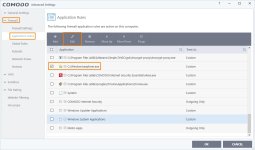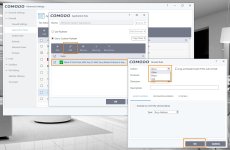- Jun 12, 2014
- 314
But in no case is a "fileless malware" truly fileless. The malware has to act somehow- and these actions will cause changes can be detected by superior protection routines.
File-rating based auto-sandboxing is no superior protection routine.
Of course the malware has to act somehow on the disk, like writing to the registry, but it can do so without writing a script or executable to the disk and launching it from there, which then does the writing to the registry. Writing to a file like the registry is fileless in a narrower sense because the file already existed and no additional files have to be dropped and launched from the disk. Abused legitimate processes like Powershell, rundll32 and the likes will only be sandboxed by CF if they execute a script or dll from the disk because those filetypes are covered by the file-rating system.
If Microsoft Word launches another instance of Microsoft Word, this instance will not be auto-sandboxed. This new instance of Word could act as a backdoor, trojan or encrypt all your documents while CF just sits there and does nothing because Word is a trusted process.
Regarding your critique of the aforementioned security programs like Sandboxie, I of course agree. I did not encourage anyone to use them, I just tried to explain how they offer protections which cover (at least to some extent) the abuse of trusted processes independently from file-rating.
Last edited:

